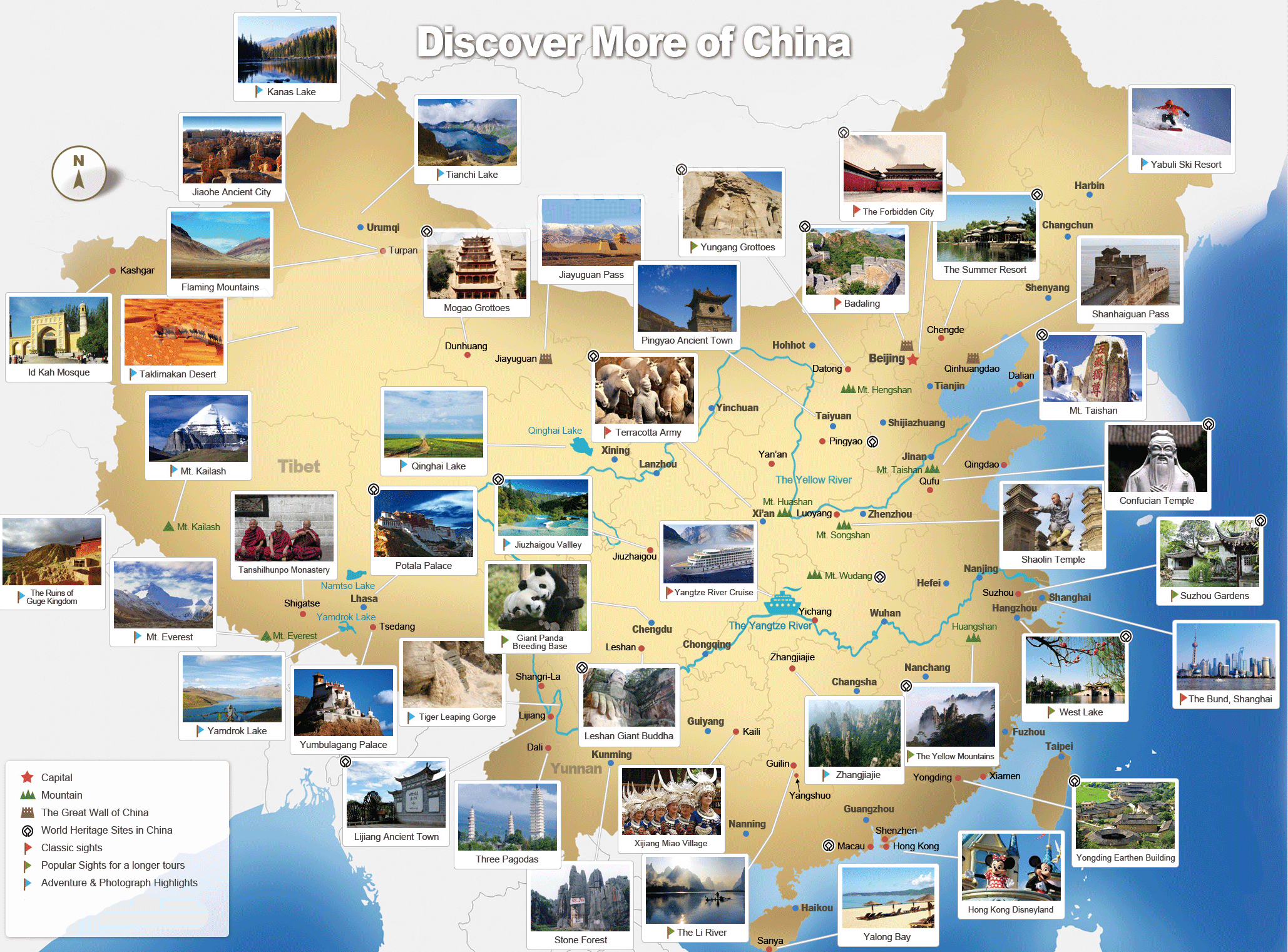
China, a land of staggering contrasts and profound history, beckons travelers with an irresistible allure. From ancient imperial cities to futuristic metropolises, serene natural wonders to bustling markets, it offers an odyssey unlike any other. This comprehensive guide will navigate you through the essentials of planning an unforgettable trip to the Middle Kingdom, covering its top attractions, rich history, practical travel tips, accommodation, transportation, and the best time to visit.
A Tapestry of Time: China’s Enduring History
To understand modern China is to appreciate its ancient roots. Spanning over 5,000 years, Chinese civilization is one of the oldest continuous cultures on Earth, marked by a succession of powerful dynasties that shaped its philosophy, art, and governance.

Related Articles about China: A Journey Through Time, Culture, and Unforgettable Landscapes:
- A Journey Through Enchantment: Your Ultimate Travel Guide to Malaysia
- The Pearl of the Orient Seas: A Comprehensive Travel Guide to the Philippines
- A Traveler’s Handbook to Singapore: A Jewel of Southeast Asia
- India: A Traveler’s Guide to a Land of Infinite Wonders
The story begins with legendary figures and early dynasties like the Xia, Shang, and Zhou, laying the foundations for a unified China. It was the Qin Dynasty (221-206 BC) under Emperor Qin Shi Huang that famously unified the warring states, built the first sections of the Great Wall, and left behind the awe-inspiring Terracotta Army. The Han Dynasty (206 BC – 220 AD) followed, expanding the empire, establishing the Silk Road, and cementing many cultural norms.
Subsequent dynasties like the Tang (618-907 AD) saw a golden age of poetry, art, and cosmopolitanism, while the Song (960-1279 AD) witnessed remarkable advancements in technology and philosophy. The Yuan Dynasty (1271-1368 AD) brought Mongol rule under Kublai Khan, followed by the Ming Dynasty (1368-1644 AD), which constructed much of the Great Wall we see today and built the Forbidden City. The final imperial dynasty, the Qing (1644-1912 AD), expanded China’s borders to their greatest extent before collapsing under internal pressures and foreign influence, ushering in the modern era of the Republic of China and, eventually, the People’s Republic of China in 1949.
This rich historical tapestry is evident in every corner of the country, from ancient temples and imperial palaces to the philosophical underpinnings of its modern society.
Top Attractions: Where Ancient Wonders Meet Modern Marvels
China’s sheer size means its attractions are incredibly diverse. Here are some of the must-see highlights:
-
The Great Wall of China (Beijing/Hebei): An absolute icon, this monumental defensive structure stretches thousands of kilometers. Popular, well-preserved sections near Beijing include Badaling (most accessible, but crowded), Mutianyu (less crowded, excellent cable car and chairlift options, toboggan ride down), and Jinshanling (more rugged, offering a fantastic hiking experience). Each section offers unique perspectives on this engineering marvel.
-
The Forbidden City & Tiananmen Square (Beijing): At the heart of Beijing lies the sprawling Forbidden City, the imperial palace for 24 emperors over nearly 500 years. Its grandeur, intricate architecture, and vast courtyards offer a profound glimpse into imperial power. Adjacent is Tiananmen Square, one of the largest public squares in the world, home to the Monument to the People’s Heroes, the Great Hall of the People, and Chairman Mao’s Mausoleum.
-
The Terracotta Army (Xi’an): Discovered in 1974, this UNESCO World Heritage site is an astonishing collection of thousands of life-sized terracotta warriors, horses, and chariots, guarding the mausoleum of China’s first emperor, Qin Shi Huang. Each warrior has unique features, a testament to ancient craftsmanship.
-
The Bund & Pudong Skyline (Shanghai): Shanghai is China’s most cosmopolitan city, a dazzling blend of East and West. The Bund, a historic waterfront promenade, offers breathtaking views of the futuristic Pudong skyline, home to architectural marvels like the Oriental Pearl TV Tower, Shanghai Tower, and Jin Mao Tower. Explore the French Concession for a taste of old Shanghai charm.
-
Li River Cruise & Karst Mountains (Guilin/Yangshuo): Immerse yourself in the ethereal beauty of southern China. A cruise down the Li River from Guilin to Yangshuo reveals iconic karst limestone peaks shrouded in mist, traditional fishing villages, and lush bamboo groves, often depicted in classical Chinese paintings. Yangshuo itself offers opportunities for cycling, rock climbing, and exploring caves.
-
Giant Panda Breeding Research Base (Chengdu): Home to China’s beloved national treasure, Chengdu is the place to see giant pandas up close. The research base focuses on conservation and allows visitors to observe these adorable creatures in a semi-natural habitat, especially during feeding times in the morning.
-
Zhangjiajie National Forest Park (Hunan): Famous for its towering, pillar-like rock formations that inspired the floating mountains in James Cameron’s "Avatar," Zhangjiajie offers dramatic landscapes, deep gorges, and lush forests. Glass bridges, cable cars, and thrilling skywalks provide unparalleled views.
-
Potala Palace (Lhasa, Tibet): For those seeking a more spiritual and adventurous journey, the majestic Potala Palace, former winter residence of the Dalai Lamas, stands as a symbol of Tibetan Buddhism and its unique culture. (Note: Travel to Tibet requires special permits and often organized tours).
-
Classical Gardens of Suzhou (Suzhou): Known as the "Venice of the East," Suzhou boasts exquisite classical gardens, meticulously designed with rockeries, ponds, pavilions, and winding paths. The Humble Administrator’s Garden and Lingering Garden are prime examples of this refined artistry.
-
Huangshan (Yellow Mountain, Anhui): A UNESCO World Heritage site, Huangshan is renowned for its oddly shaped granite peaks, ancient pine trees, hot springs, and seas of clouds, especially at sunrise and sunset. It’s a challenging but incredibly rewarding hiking destination.

Navigating the Dragon: Transportation in China
Getting around China is remarkably efficient, thanks to massive investment in infrastructure.
- High-Speed Rail (G-trains, D-trains): China boasts the world’s most extensive high-speed rail network. These modern, comfortable trains connect major cities at speeds of up to 350 km/h, making inter-city travel fast and enjoyable. Booking in advance is highly recommended, especially for popular routes and during holidays.
- Flights: Domestic flights are extensive, connecting virtually all major cities. China Eastern, China Southern, Air China, and Hainan Airlines are major carriers. While often quicker for long distances, consider high-speed rail for journeys under 6-8 hours, as train stations are often more central than airports.
- Subways/Metros: Major cities like Beijing, Shanghai, Guangzhou, and Xi’an have extensive, clean, and efficient subway systems, often with English signage and announcements. They are the best way to navigate within cities.
- Taxis & Ride-Sharing: Taxis are readily available and relatively inexpensive. However, language can be a barrier. Ride-sharing apps like Didi Chuxing (China’s equivalent of Uber) are incredibly popular and convenient, allowing you to input destinations in Chinese characters (or pinyin, though less reliable) and pay digitally.
- Buses: Local city buses are abundant and very cheap but can be confusing for non-Mandarin speakers due to lack of English signage and complex routes. Long-distance buses connect smaller towns but are generally slower and less comfortable than trains.
Resting Your Head: Accommodation Options
China offers a vast range of accommodation to suit every budget and style:
- Luxury Hotels: International chains like Marriott, Hilton, Shangri-La, and Peninsula have a strong presence in major cities, offering world-class amenities and services.
- Mid-Range Hotels: Local chains like Jinjiang Inn, Home Inn, and Hanting Hotel provide clean, comfortable, and affordable rooms. Many boutique hotels offer unique design and local charm.
- Budget Accommodation: Hostels are plentiful in tourist cities, offering dorm beds and private rooms, often with good social atmospheres and helpful staff. Guesthouses, particularly in smaller towns or scenic areas, can offer authentic local experiences.
- Unique Stays: Consider traditional courtyard hotels (siheyuan) in Beijing, renovated shikumen houses in Shanghai, or guesthouses in rural scenic areas for a more immersive cultural experience.
Booking: International booking platforms like Booking.com and Agoda work well. For a wider selection of local hotels and guesthouses, consider using Chinese apps like Ctrip (now Trip.com) or Fliggy.
Practical Wisdom: Essential Travel Tips
Traveling in China requires some preparation, but the rewards are immense.
- Visa: A visa is mandatory for most foreign visitors and must be obtained before arrival. The application process can take several weeks, so plan well in advance. Check the specific requirements for your nationality with the Chinese embassy or consulate in your home country.
- Language: Mandarin Chinese is the official language. While English is spoken in major hotels and tourist sites, it’s not widely understood elsewhere. Download a translation app (like Google Translate with offline Chinese packs) and learn a few basic phrases (hello, thank you, excuse me, how much). Having destinations written down in Chinese characters is invaluable.
- Internet & VPN: China operates the "Great Firewall," blocking many Western websites and apps (Google, Facebook, Instagram, WhatsApp, etc.). A Virtual Private Network (VPN) is essential if you want to access these services. Download and set up your VPN before arriving in China, as it can be difficult to do so once inside.
- Money & Payment: China is largely a cashless society. WeChat Pay and Alipay are ubiquitous for everything from street food to major purchases. Tourists can now link international credit cards (Visa, Mastercard) to these apps for seamless payments. While useful, carrying some cash (small denominations) for smaller vendors or emergencies is still wise. ATMs are widely available, but inform your bank of your travel plans.
- Health & Safety: China is generally safe for tourists. Tap water is not potable; drink bottled water. Pollution can be an issue in major cities, especially in winter; consider bringing face masks if you are sensitive. Travel insurance is highly recommended. Be aware of your surroundings, especially in crowded areas, and keep an eye on your belongings.
- Etiquette:
- Chopsticks: Don’t stick them upright in your rice (resembles incense at funerals). Don’t point with them.
- Bargaining: Common in markets, but less so in department stores.
- Public Behavior: Spitting in public is less common than it used to be but still occurs. Queuing is improving but can sometimes be chaotic.
- Respect: Be respectful when visiting religious sites. Dress modestly.
- Packing: Comfortable walking shoes are a must. Pack layers, as temperatures can vary widely depending on the region and season. Bring a universal power adapter. A small first-aid kit is always useful.
When to Go: Best Time to Visit
China’s vastness means the "best time" can vary by region, but generally:
- Spring (April-May): Generally pleasant temperatures across most of the country, fewer crowds than autumn. Ideal for hiking and exploring cities.
- Autumn (September-October): Often considered the best time, with clear skies, comfortable temperatures, and beautiful foliage, especially in northern and central China. However, this is also a very popular time, so book well in advance.
- Summer (June-August): Hot and humid in most regions, especially in the south. Can be very crowded at popular attractions. However, it’s ideal for visiting cooler regions like Tibet or parts of Inner Mongolia.
- Winter (November-March): Cold, especially in the north (Beijing can be freezing with snow), but fewer crowds and lower prices (except around Chinese New Year). Harbin’s Ice and Snow Festival is a major draw. Southern China (Guangzhou, Hong Kong) remains mild.
Avoid Major Public Holidays:
- Chinese New Year (late Jan/Feb): The biggest holiday, involving massive internal migration. Transportation and attractions are packed, and many businesses close.
- Golden Week (October 1-7): National Day holiday. Extremely crowded at all major tourist sites and transport hubs.
- Labour Day (May 1-3): Another busy period.
Embark on Your Chinese Adventure
China is a country that challenges perceptions and rewards curiosity. Its ancient history, vibrant culture, diverse landscapes, and rapid modernity combine to create a travel experience that is truly unparalleled. With careful planning and an open mind, your journey through the Middle Kingdom will be an unforgettable chapter in your travel story, leaving you with a profound sense of awe and a desire to return. So pack your bags, prepare for an adventure, and let China captivate your imagination.





